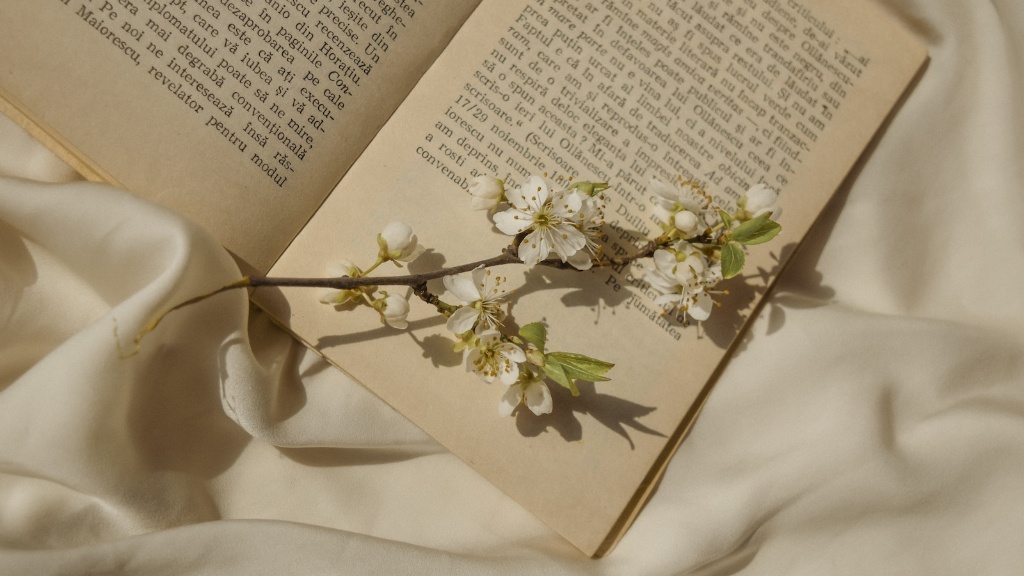Introduction to the Romantic Movement in Poetry
The Romantic Movement in poetry began in the mid-eighteenth century and lasted until the mid-nineteenth century. It was a dramatic departure from the earlier neoclassical style of poetry, which had been in vogue since the Renaissance. Romantic poetry was characterised by its focus on emotions and personal experience, as well as its exploration of the sublime, the awe-inspiring and mysterious in nature. The Romantics rejected traditional forms of poetry and embraced the free forms of expression and sentiment that are the hallmarks of the movement.
The Romantic Movement was not only a revolution in form, but it also represented an evolution in attitude. The Romantics believed in the power of individual experience and eschewed conformity to be found in mainstream society. Instead, they sought to understand the spiritual world and to express their feelings and creative impulses freely. This trend can be seen in the work of some of the most famous and influential Romantic poets such as William Wordsworth, Percy Bysshe Shelly, John Keats, George Gordon, Lord Byron and Samuel Taylor Coleridge.
Themes of the Romantic Movement in Poetry
One of the most prominent themes in Romantic poetry was the idea of imagination and its place in the spiritual realm. Imagination was seen as a powerful force that could transform the individual’s inner life and sense of self. This idea is explored in the works of the Romantics, particularly Wordsworth, who proclaimed in his famous poem The Prelude that “the child is the father of the man”. He believed strongly in the power of imagination and the creative spirit to shape one’s life and to bring about personal growth.
Another key theme in Romantic poetry was the exploration of nature and its sublime power. The Romantics looked to nature to express their sense of awe, mystery and spiritual transcendence. This idea is reflected in many works of the period, from Wordsworth’s passion for the Lake District to Shelly’s celebration of the beauty of the Mediterranean. Nature was seen as a source of both inspiration and comfort for the Romantics, and it was often used as a metaphor for the inner self.
Characteristics of the Romantic Movement in Poetry
One of the most distinctive characteristics of Romantic poetry is its focus on emotion and personal experience. The Romantics explored their own feelings and experiences in a highly subjective manner, often shunning artificial forms of expression. Their writings tended to be highly charged, evocative and often deeply personal. They also sought to capture the essence of particular moments and experience in a vivid and intense way that was felt powerfully by readers.
Romantic poetry was also characterised by its use of vivid imagery and figurative language. The Romantics embraced the power of imagery to convey the intensity of their feelings and to draw readers into a highly personal world. They used metaphor, simile, personification and hyperbole to create scenes and descriptions that stimulate the emotions. Many of the key figures of the Romantic movement are renowned for their imagery-rich works, such as Wordsworth’s Lucy poems and Shelly’s Ode to the West Wind.
The Legacy of the Romantic Movement in Poetry
The Romantic Movement in poetry left an indelible mark on the genre. It widened the scope of poetic expression to encompass the personal and the sublime, and allowed poets to explore their inner emotions and spiritual beliefs in a more meaningful and accessible way. Although the movement eventually declined, Romantic poetry has remained an important influence in the literary world. Many of the renowned poets of the twentieth century, such as T.S. Eliot and W.B. Yeats, were strongly influenced by the works of the Romantic poets, and many of the themes and characteristics of Romantic poetry can be seen in the works of modern poets.
The Relationship between Symbolism and the Romantic Movement in Poetry
The Romantic Movement in poetry was closely related to the emergence of Symbolism in the arts. The rise of Symbolism in the mid-nineteenth century was heavily influenced by the works of the Romantics, particularly the ideas concerning imagination and the exploration of the sublime. Furthermore, the Symbolists adopted much of the imagery and figurative language developed by the Romantics to add depth and intensity to their works. Symbolist poetry often explored the inner realms of the soul and sought to express feelings and ideas that could not be fully expressed in language.
Connections between the Romantic Movement in Poetry and Empowerment
The Romantic Movement in poetry was closely associated with the idea of empowerment. The Romantics championed individual experience and creativity, rejecting the conformist tendency of mainstream society and seeking personal and spiritual enlightenment in their works. Additionally, their focus on emotion was seen as a way of celebrating and validating the inner life of the individual. While their ideas were somewhat radical in their own time, they have become a cornerstone of modern society, where individuals express themselves more freely and look to their inner selves in order to find a sense of self-worth and fulfilment.
Modern Interpretations of the Romantic Movement in Poetry
Modern interpretations of the Romantic Movement in poetry are varied, often appearing in different forms of media. Writers such as J.R.R. Tolkien and C.S. Lewis drew heavily on Romantic themes and imagery in their works, while popular music often contains lyrical and musical elements that echo the works of the Romantics. In film, the works of directors such as Terrence Malik have been seen to draw heavily on the style, themes and imagery of Romanticism. Finally, modern digital art has embraced many of the characteristics and themes of Romanticism, often creating emotionally charged and highly personal digital artworks that capture the essence of the Romantic spirit.
Creative Expression and the Romantic Movement in Poetry
The Romantic Movement in poetry had a powerful influence on creative expression in the arts. The Romantics’ rejection of conformity and celebration of individual experience and creativity helped to pave the way for subsequent artistic movements, especially the Symbolist and abstract movements. Additionally, their focus on emotion and the transcendent power of nature allowed artists of subsequent generations to explore their inner selves and express their emotions in original and engaging ways. The legacy of the Romantic Movement in poetry is still alive today and can be seen in the works of many modern artists.


